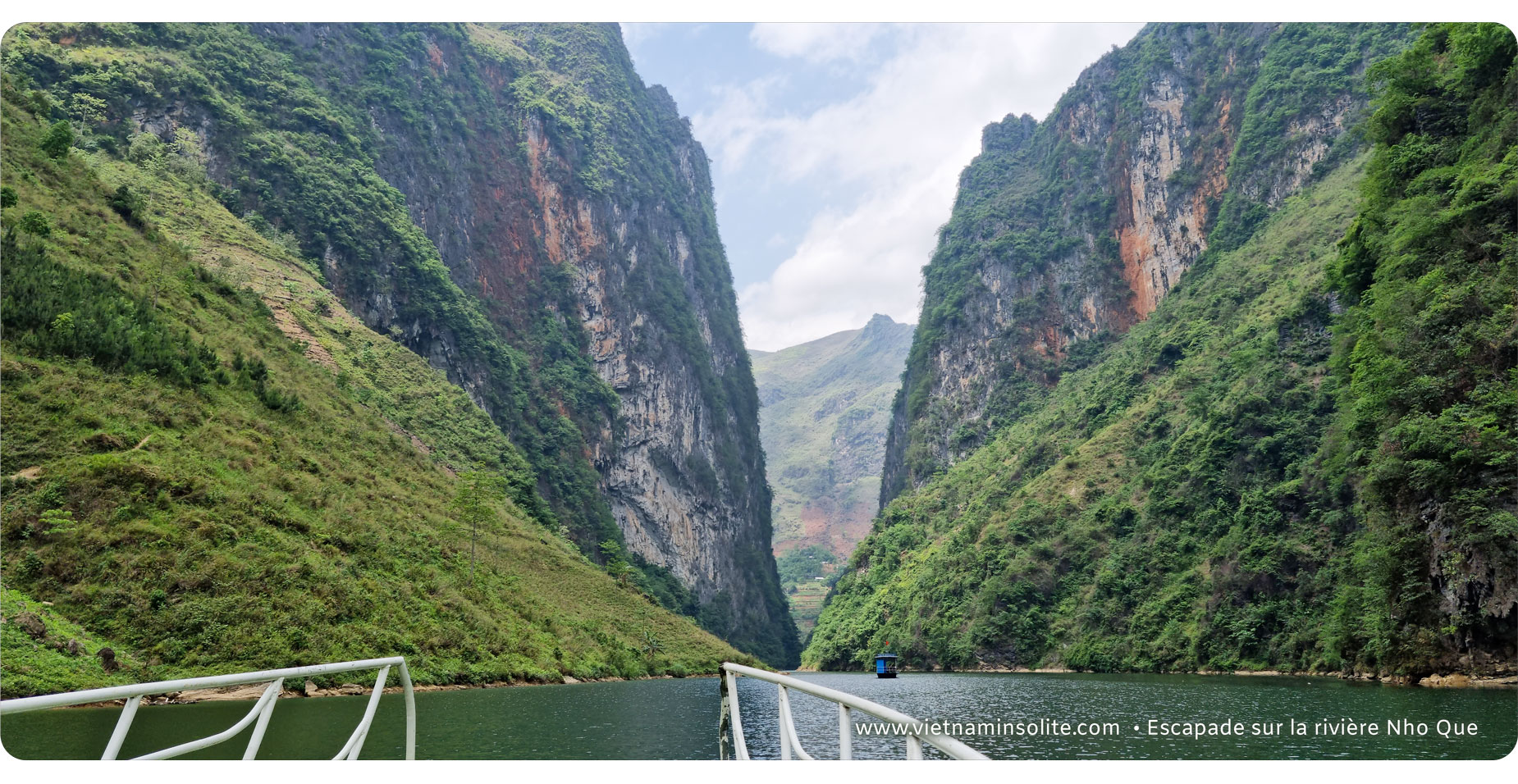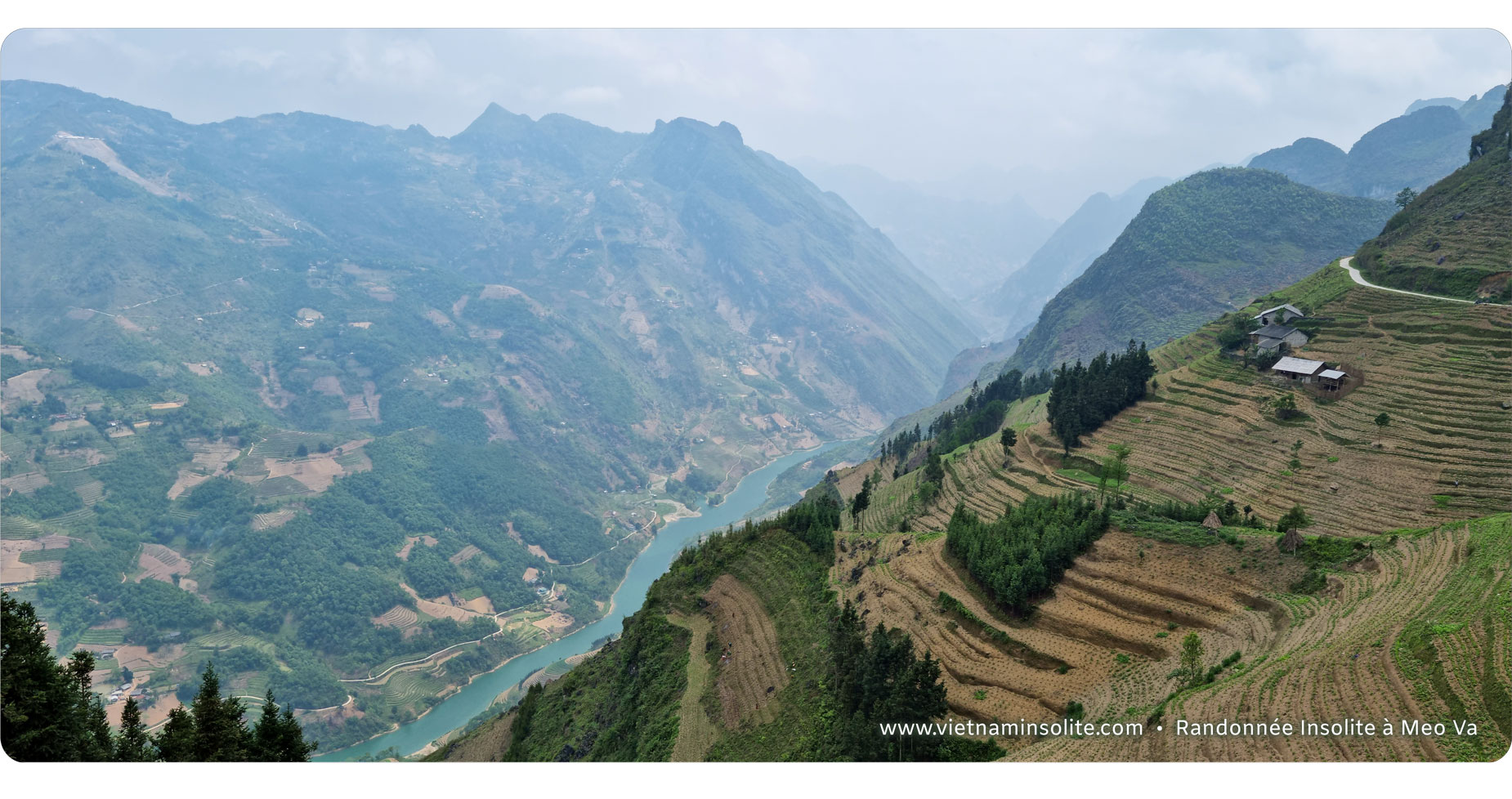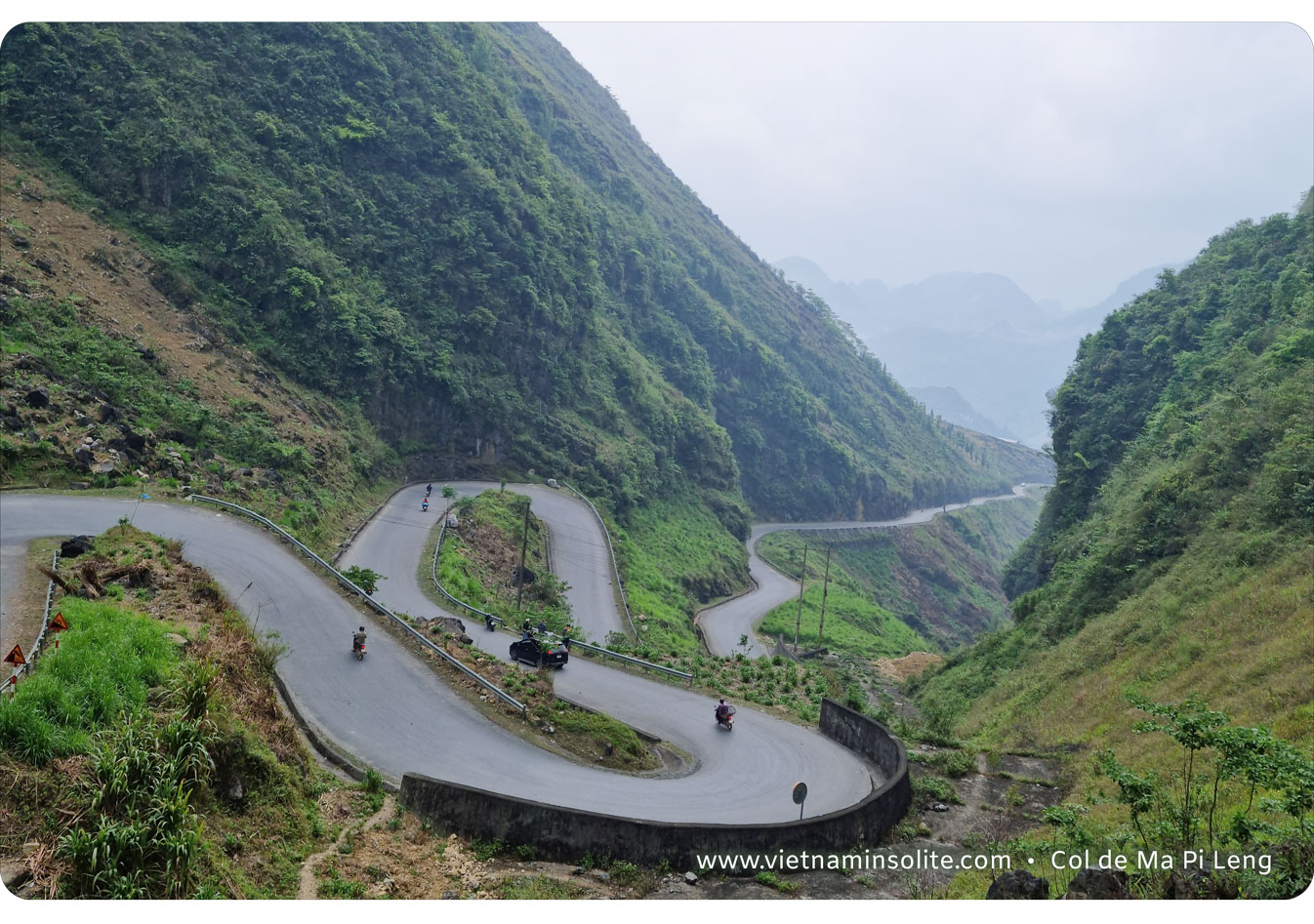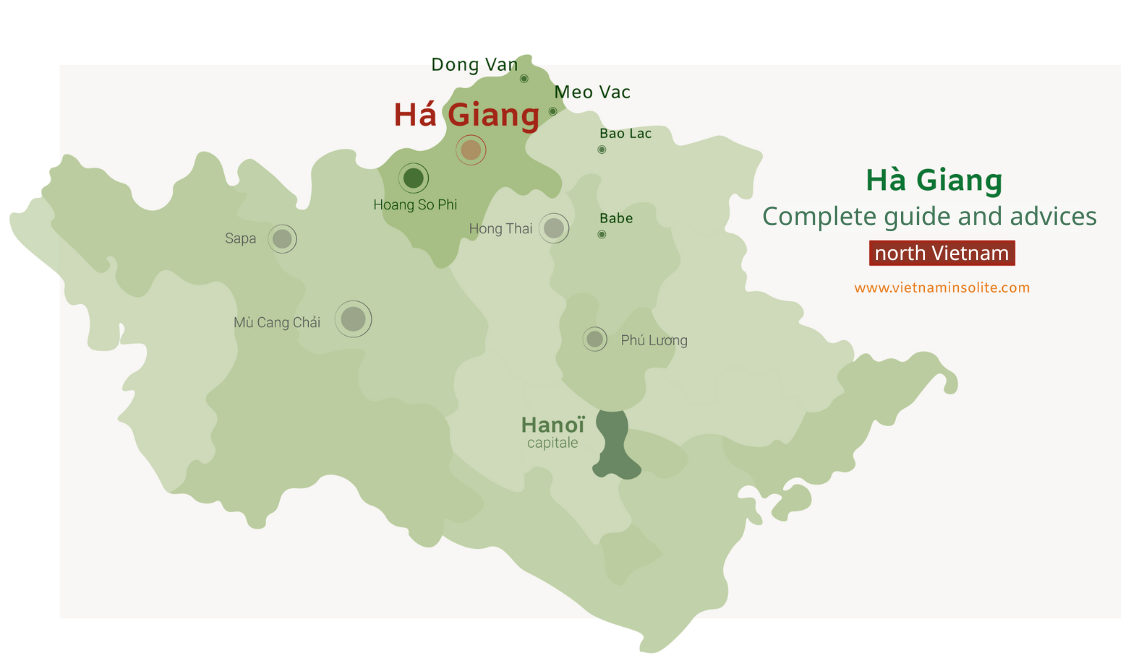
Ha Giang, Vietnam: Complete Guide And Tips
Vertiginous. Welcoming. The Ha Giang region invites you to explore some of the country’s most winding roads, which may also be the most beautiful. Every turn offers a breathtaking panorama, marked by Vietnam's signature landscapes: lush mountains, karst peaks, rice terraces, and limestone plains. If you are a photography enthusiast, make sure to have plenty of gigabytes. If you love hiking, bring a good pair of shoes.
In this article, we present the region through a tried-and-tested itinerary, supplemented with logistical information to consider when organizing your excursion.
How to visit Ha Giang ?
Inspiration for the unusual
Located almost 6 hours from Hanoi, Ha Giang is a vast province that perfectly combines outdoor activities like hiking with cultural discoveries. In this context, we recommend dedicating at least 3 days and 2 nights to explore it, or even 3 days and 4 nights depending on your full itinerary. To help you with your planning, here is the program from the latest excursion we organized in the region:
▶︎ Day 1 : Hanoi - Ha Giang - Dong Van
Departure the evening before. Upon arrival early in the morning, you will be greeted by a local guide and a private driver at the bus station. The day's itinerary takes you along the winding roads of the region, offering a vertiginous dive into the northern highlands, complemented by encounters with the local ethnic groups. Overnight in Ha Giang city.
▶︎ Step 1 : Depart for Quan Ba – the "Gate of Heaven," located 40 km from your accommodation. At 1500 meters altitude, this gate perched at the top of the Quan Ba pass provides access to the Dong Van plateau geological park. From here, we enjoy a panoramic view of the mountainous region. Then, head for another viewpoint at the neighboring Co Tien mountain.
▶︎ Step 2 : Visit the town of Yen Minh. Be careful if you're driving—the Can Ty bridge with its two tight curves requires a good knowledge of the road. There are alternative routes that add only about 20 kilometers to your journey.
▶︎ Step 3 : Depart for the ancient town of Dong Van, located 45 km away: pass through the iconic 9 Khoan pass, a key landmark of Ha Giang, and visit the old village of Pho Cao. If you're on your own, try to plan your itinerary so you arrive in Dong Van before nightfall for safety reasons on the road.
▶︎ Day 2 : Dong Van - Meo Vac
Early departure for the Dong Van market, animated by the H'mong people, set against the backdrop of stunning mountainous landscapes. You'll find a wide variety of products, from daily necessities to local specialties such as linen, brocade, and buckwheat cakes. Then, head to the Meo King’s palace, located in the plains of Sa Phin commune. Built in the 20th century, this museum showcases the power of the H'mong King from the Hoang Yen Chao family, who ruled the region during the French colonial period.
Note : You can also depart at 6:30 AM, visiting the market and the palace before heading to Lung Cu, a panoramic viewpoint where a large Vietnamese flag is flown. After the effort (839 steps), you'll be rewarded with a breathtaking view of the valley and China.
Head towards the limestone region of Meo Vac along a route bordering the Nho Que River. At the dock, you can take a tourist boat for a 40-minute journey to cross the Tu San alley (with two opposite passes on each side).
On the road, stop at Ma Pi Leng Pass to appreciate the surrounding beauty and perhaps visit the "Happiness Road" museum, which tells the tumultuous history of National Route 4C. Finally, as you approach Meo Vac, make a stop at the "12 km" marker to admire the sunset over Ma Pi Leng Pass before settling in for the night at the Mong cultural village of Pa Vi.

▶︎ Day 3 : Meo Vac - Retour à Hanoï

Upon waking up, you will enjoy the pleasure of admiring the lush green landscapes, dotted here and there with dark rocks, surrounding your accommodation in Meo Vac. After one last invigorating adventure, head back to Ha Giang (150 km) to catch the bus to Hanoi at 2:00 PM or 9:00 PM (arriving at 4:00 AM).
Tips and recommendations
- Try to have at least a full morning on Sunday to enjoy the Dong Van Sunday market.
- You can enjoy a beautiful hike in Meo Vac, which offers very different landscapes compared to the agricultural mountains of Hoang Su Phi.
- If you plan to explore Ha Giang independently, especially if you're driving your own 4-wheel or 2-wheel vehicle, be cautious. The roads are winding and challenging. Try to plan your route so you can reach your destinations before nightfall.

Logistical Information
When to visit Ha Giang, Vietnam?
As a mountainous region, Ha Giang has cooler temperatures compared to the lowlands, averaging 21-23°C throughout the year. Humidity is high, and rainfall is frequent, especially during the rainy season (July-August).
The two best times to visit Ha Giang are undoubtedly in the fall (early September to late November) and in the spring (early March to late June). In the fall, buckwheat flowers bloom, giving the landscape pink hues, while in the spring, it is covered in white flowers from apricot and plum trees. These are two beautiful seasons where the weather and landscapes combine to ensure great hiking opportunities.
For more information on the Vietnamese weather: quand voyager au Vietnam ?
How to get to Ha Giang ?
Starting from Hanoi, buses to Ha Giang depart almost every hour from the My Dinh, Luong Yen, Yen Nghia, and Gia Lam bus stations. To save time, we recommend taking a night bus so you can wake up at your destination. For transportation, you can choose a sleeper bus (costing $10-20 one-way), a limousine bus, or a private car with a driver. We recommend the sleeper bus because transportation choices are part of the journey in Asia. It's generally comfortable (unless you're taller than 1.80m), and we've never encountered any issues.
Once in Ha Giang, you can rent a motorcycle ($5-10/day) or a vehicle for up to 16 people depending on the size of your group.
Where to stay in Ha Giang ?
The region offers a range of accommodations: simple hotels, upscale hotels (such as P’apiu in Yen Dinh), guesthouses (homestays), community rooms from $20, and bungalows for up to $100 per night.
Our final tips
The itinerary presented meets the following requirements: departure and return from Hanoi, accompanied driving with a family vehicle, blending landscapes and cultural discoveries. It is absolutely possible (and even recommended) to include Ha Giang in a broader northern Vietnam itinerary. For example, if you plan to visit Hoang Su Phi (a great hike), you can continue your journey to Ha Giang, and vice-versa. You could also follow the beautiful routes of Bao Lac, then Ba Be, before heading back to Hanoi, and vice-versa. There are many combinations to consider.
Planning a well-organized trip in northern Vietnam is not easy, and time is a key factor in Vietnam. If you have any questions, don't hesitate to contact our team, who find it hard to resist the call of the mountains: contact@vietnaminsolite.com .
Here are some other articles that may help you discover northern Vietnam:
Leave a comment and let’s chat :)







